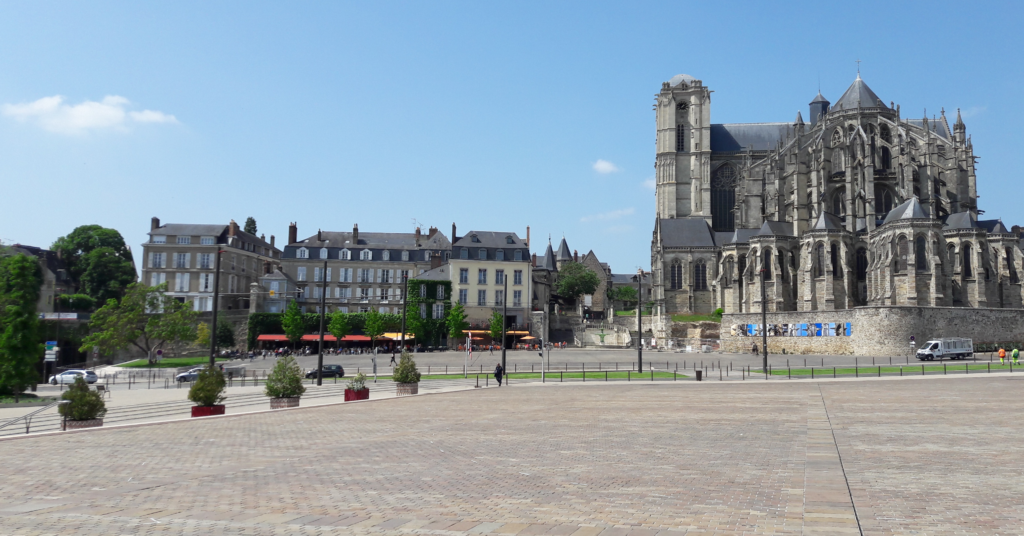
The French round awaits its heroes
In 1951, a French Grand Prix was held in Albi for the first time. It was only the third season of the then young motorcycle world championship. Unfortunately, the drivers from Germany were not yet admitted at that time, although the Second World War was already 6 years in the past. But even then, an organization called FIM rarely covered itself in glory and it probably suited the gentlemen at the time not to have to applaud too many German victories. Because in the last year of the European Championships in 1939 the drivers from this country had achieved more than half of the victories, they were better off not even being allowed in for the time being. This danger no longer exists. Stefan Bradl and Jonas Folger are only involved in MotoGP as test and reserve riders. They currently pose no threat to the world’s best regular drivers, but what about the two heroes from France?
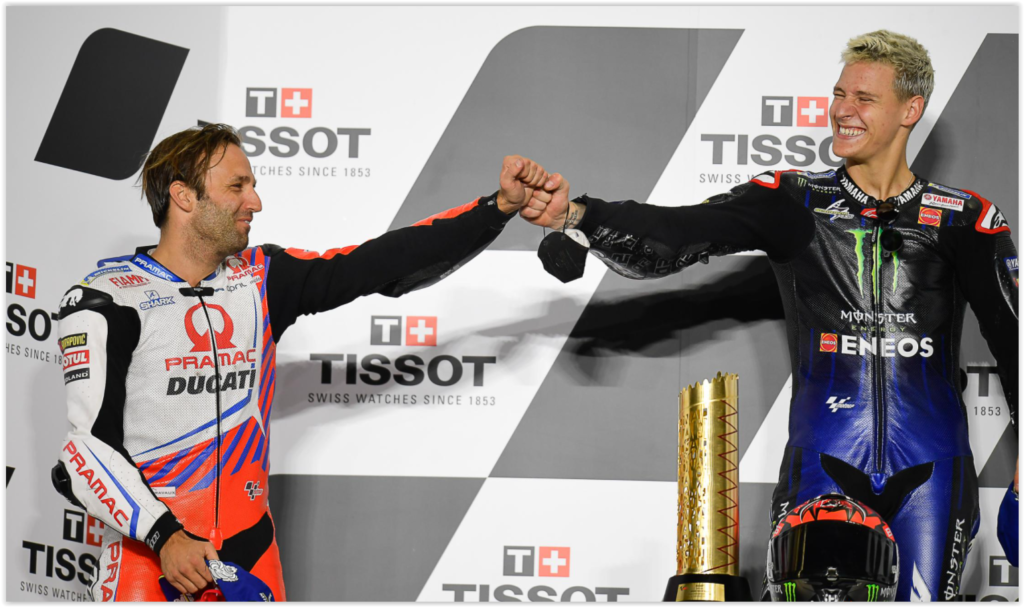
The traditional racetrack in western France
With a length of 4.422 km, the Circuit Bugatti belongs in the lower midfield of the current MotoGP circuits. As with most circuits, Le Mans is driven clockwise. The circuit has 5 left and 9 right turns and is 13 meters wide. The longest straight is 675 meters and the absolute lap record was held by Frenchman Johann Zarco, who was riding a Tech 3 Yamaha from 2018, until he was replaced four years later by “Pecco” Bagnaia with a time of 1:30.450 minutes. Maverick Viñales managed the best race lap so far in 2017 with 1:32.309 minutes. As far as atmosphere and food are concerned, this course can only be warmly recommended to every fan. There are plenty of accommodations in the area, but anything close by is already taken or at least hopelessly overpriced on the Grand Prix weekend. We are therefore generally happy to accept a somewhat longer route and, for example, stay in Angers, from where you can get to the route in about an hour. Preferably by motorbike, because all of the accesses and exits on the GP weekend are usually completely congested.
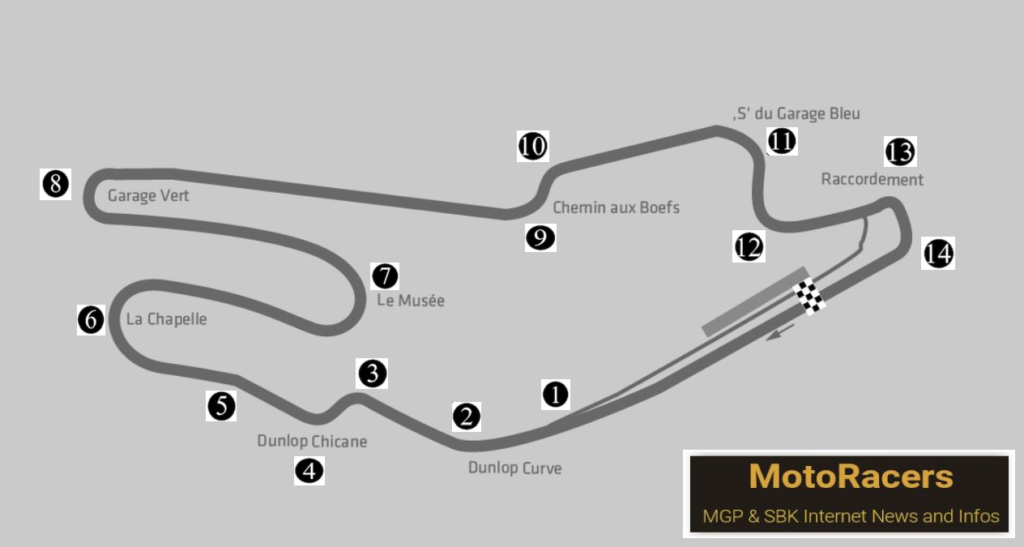
Initial situation
While the two French are surprisingly far behind after the first 4 laps, a few surprises behind world championship leader and defending champion Bagnaia make up the top of the intermediate ranking. With Marco Bezzecchi in second place and behind them two KTM riders, hardly anyone would have expected before the start of the season. With Luca Marini on P5 as well, while co-favorite Fabio Quartararo on the Yamaha is already a long way behind in 11th place. At first glance, the position of his compatriot Johann Zarco doesn’t look very refreshing. But the likeable man from Cannes is only 3 points behind KTM newcomer Jack Miller in fourth place and the Yamaha hope is only 6 more. However, after only a fifth of the season, it is far too early for predictions and only Enea Bastianini, who will be missing again in Le Mans, probably has little chance of fighting for the title. As last year’s winners in Texas and Le Mans, there will be a new winner at the French GP this season. Below is the current intermediate classification.
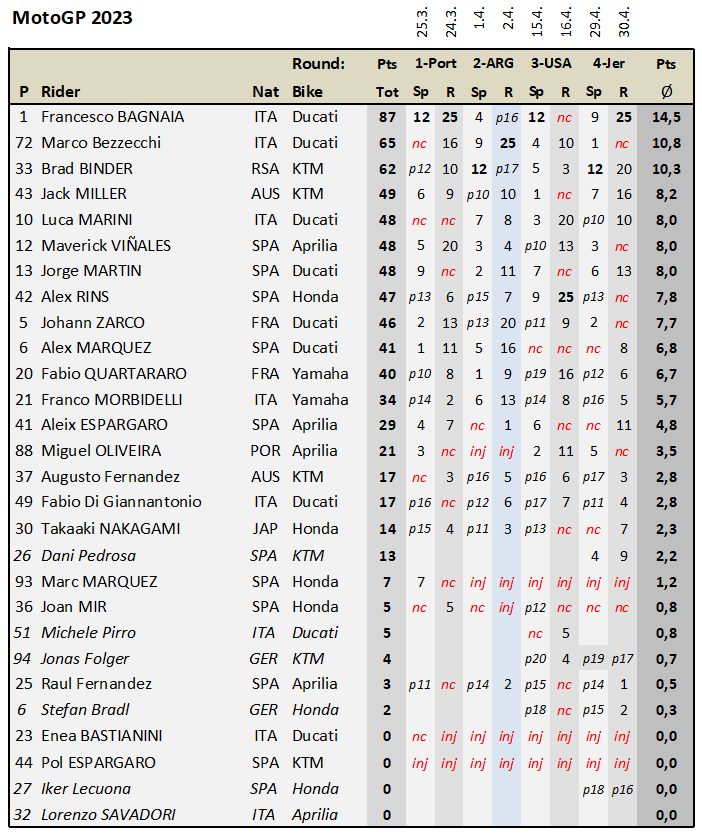
The statistics of the French Grand Prix at Le Mans
Until shortly before the introduction of MotoGP in 2002, the French GP was often held at Le Castellet and other circuits. After the temporary end of the four-stroke era in the mid-1970s, it was superstar and crowd favorite Barry Sheene who brought Suzuki’s first two-stroke victories. After that came the heyday of overseas two-wheeler heroes, with many famous pilots from the USA, followed by Australian Mick Doohan as the dominator of the second half of the 1990s. Since then, his compatriots Chris Vermeulen, Casey Stoner and Jack Miller have only been able to break through the Italian and Spanish dominance on the traditional Circuit Bugatti circuit three times in a row. By the way, the world-famous car brand is actually not of French, but of German origin, as the history of Alsace clearly proves. Incidentally, the Italian-born founder of the Bugatti car brand worked as a designer for the German company Magirus Deutz before opening his company in Molsheim near Mulhouse in what is now France (but before World War II it belonged to Germany). He died in Paris in 1947 at the age of 66 and the most famous Bugatti cars were developed and manufactured during his lifetime.
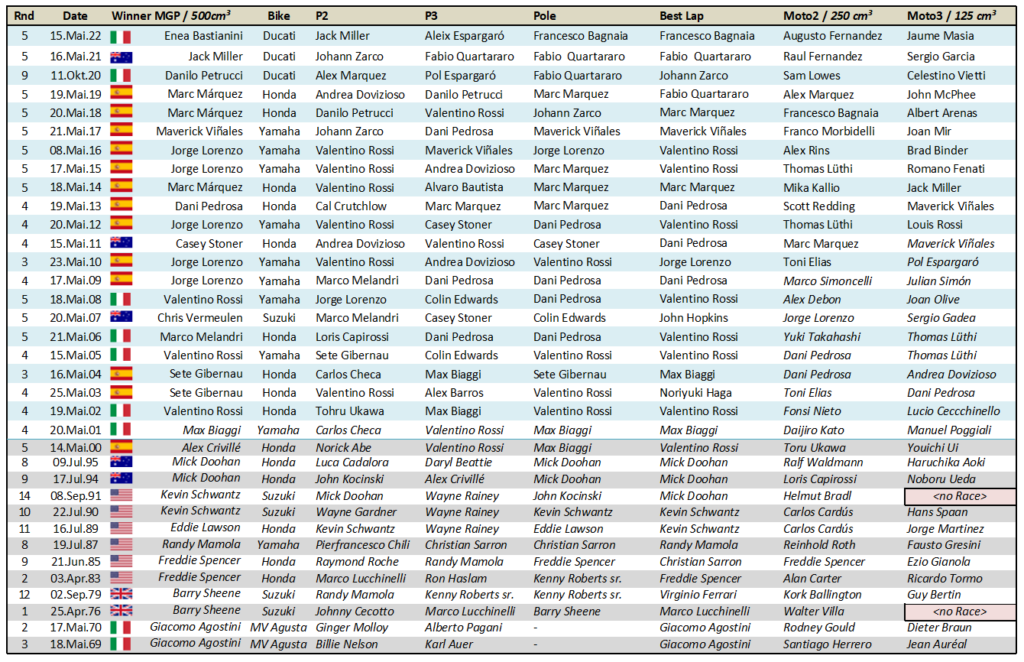
Unless otherwise stated, this applies to all images (© MotoGP).
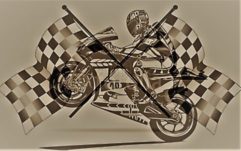
No Comments Yet